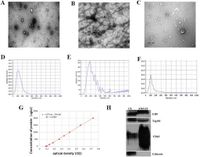Adenomyosis, a condition in which the inner lining of the uterus, called the endometrium, grows into the muscular wall of the uterus, presents significant challenges in women's health. A recent study has unveiled a promising avenue for improving diagnostics and treatment by identifying microRNA-92a-3p (miR-92a-3p) as a non-invasive biomarker associated with the disease.
During the investigation, researchers at Jiaxing Maternal and Child Health Hospital discovered that miR-92a-3p is significantly upregulated in exosomes derived from ectopic adenomyotic lesions. This elevation was found to correlate with the aggressive behavior of endometrial cells, enhancing their migration and invasion capabilities. The research, conducted between early 2019 and late 2022, elucidates the role of exosomal microRNAs in adenomyosis, a condition that until now, has evaded definitive diagnostic measures.
The importance of miR-92a-3p cannot be overstated, as it emerges here not just as a marker but a facilitator of the disease's progression. "Our findings highlight upregulated miR-92a-3p in biofluid exosomes as a promising non-invasive biomarker for diagnosing and monitoring adenomyosis," wrote the authors of the article. This insight offers hope for providing less invasive diagnostic pathways, potentially leveraging urine samples to ascertain disease presence effectively.
In their methodological approach, the research team utilized samples collected from patients diagnosed with adenomyosis through laparoscopy, with confirmation via histopathology. Plasma and urine samples were specifically prepared to isolate exosomes, which serve as crucial vehicles for cell communication and influence various physiological processes. Through techniques like quantitative real-time polymerase chain reaction (qRT-PCR) and exosome characterization, the researchers identified significant patterns in miR-92a-3p expression.
The study also made substantial strides in linking miR-92a-3p levels with clinical symptoms of adenomyosis. It was noted that higher concentrations in urinary exosomes were positively associated with increased uterine size and severity of menstrual pain. "This study elucidated an exosomal signaling process involving miR-92a-3p that drives pathological infiltration and angiogenesis to promote adenomyosis progression," the authors emphasized. This correlation suggests that monitoring miR-92a-3p may serve not only in diagnosis but also in tracking disease severity.
The findings have significant implications for women suffering from this condition, often leading to debilitating pain and various reproductive challenges. Extended periods of misdiagnosis tend to result in unnecessary treatments and further complications. Identifying miR-92a-3p as a focal point could lead to more directed and effective management strategies.
Targeting miR-92a-3p presents a dual opportunity: first, as a diagnostic tool capable of early detection, and second, as a therapeutic target for intervention strategies aimed at inhibiting the angiogenic and invasive behaviors fostered by adenomyosis. The current study's framework advocates for continued exploration of exosomal microRNAs and their potential roles, steering scientists towards viable pathways for further research.
In conclusion, this study marks a significant milestone in understanding adenomyosis, illustrating how specific cellular signals can dictate the condition's trajectory. The increasing prominence of miR-92a-3p in research not only enlightens our understanding of adenomyosis but opens doors to future innovations in clinical practice. The research team's dedicated efforts have laid the groundwork for potential advancements in non-invasive diagnostic markers while also setting the stage to explore targeted therapeutic approaches that could drastically alter the clinical landscape of adenomyosis treatment.




